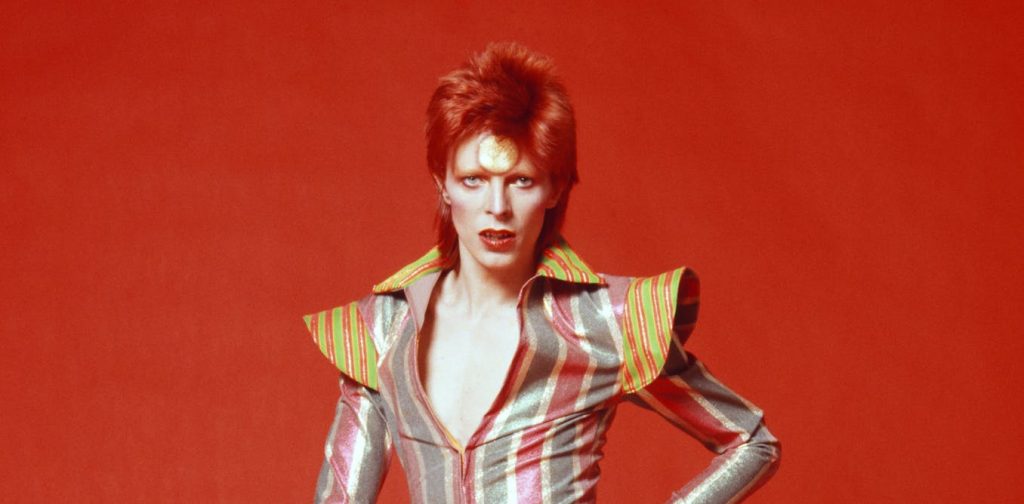David Bowie is an emblematic figure who transcended conventional boundaries of gender and glamour throughout his illustrious career. With audacious sartorial choices and a boundary-pushing persona, Bowie challenged societal norms and sparked a revolution in the perception of gender identity. This exploration delves into how Bowie’s affinity for dresses and flamboyant attire fundamentally redefined glamour and gender, inspiring generations to embrace their unique expressions of identity.
The Genesis of a Glam Rock Icon
Emerging in the early 1970s, Bowie positioned himself at the forefront of the Glam Rock movement. His alter ego, Ziggy Stardust, epitomized the genre’s virtues: flamboyance, theatricality, and a collision of genders. This kaleidoscopic character donned elaborate costumes that included sparkly outfits, platform boots, and, notably, dresses. By integrating such attire into mainstream music, Bowie catalyzed a dialogue on the fluidity of gender expression.
Defiant Fashion Statements
Wearing dresses was not merely an aesthetic choice for Bowie; it was a profound statement of rebellion. In an era dominated by rigid gender binaries, his sartorial choices subverted expectations and challenged traditional masculinity. Garments typically associated with femininity became synonymous with power, allure, and confidence in Bowie’s performances. His groundbreaking visuals evoked curiosity and admiration, ultimately blurring the lines between male and female, performer and audience.
Of particular note was Bowie’s appearance on the cover of his 1970 album, “The Man Who Sold the World,” where he posed in a flowing dress. This audacious image became emblematic of his commitment to questioning societal norms. The cover art, with its striking contrast of masculinity and femininity, compelled viewers to reassess their preconceived notions of gender representation.
Art and Identity
Art has always been a conduit for self-expression, and Bowie harnessed it to forge a new lexicon of gender identity. His performances were theatrical spectacles that merged music, art, and fashion into an exhilarating tapestry of self-exploration. Transitioning from Ziggy Stardust to The Thin White Duke, Bowie continued to play with and redefine his identity through distinctive fashion choices, including dresses traditionally reserved for women.
Bowie’s embrace of femininity in a predominantly male music industry was a remarkable feat. It invited male fans to reconsider their own expressions of gender while providing affirmation for those who were marginalized in their own identities. His unrepentant exploration of androgyny was a beacon for those grappling with their sense of self, prompting societal reflection on the normative confines of gender.
The Influence on Pop Culture
The impact of Bowie’s gender-bending persona rippled throughout popular culture, establishing a blueprint for subsequent artists to embrace and celebrate their uniqueness. Icons like Prince, Boy George, and Lady Gaga have cited Bowie as a significant influence, espousing similar ideologies of gender fluidity. This lineage of influence illustrates how Bowie’s sartorial choices cultivated a more inclusive landscape within music and fashion, granting permission for future generations to express their identities without fear of societal retribution.
Breaking Down the Binary
By wearing dresses and embracing an androgynous aesthetic, Bowie dismantled the binary constructs of gender. This act of defiance not only highlighted the performative aspects of gender but also illuminated the social constructs that underpin societal perceptions of masculinity and femininity. The act of men wearing dresses continues to challenge viewers, urging them to confront their own biases and assumptions about gender roles.
This binary breakdown is perhaps most salient in discussions of gender today. As societal acceptance of non-binary and genderqueer identities burgeons, Bowie’s legacy remains a touchstone. His contributions laid a foundation for discussions of gender inclusivity, empowering individuals to reject restrictive labels in favor of authentic self-expression.
The Legacy of Glamour Redefined
Bowie’s foray into glassy glamour redefined not only what it meant to be a male artist but also what it meant to be glamorous. He reimagined the concept to encompass the ridiculous, the beautiful, and the unconventional. Glamour, once a reflection of conventional attractiveness, evolved in Bowie’s lexicon to include absurdity, creativity, and relentless experimentation.
The rippling effects of Bowie’s influence can be seen on runways and in music videos today. Designers pay homage to his audacious style, and fashion houses continually draw inspiration from the eclectic motifs he championed. The dazzling diversity of Bowie’s sartorial legacy challenges contemporary artists to uphold the spirit of self-expression and abandon limiting expectations regarding glamour.
Conclusion: An Ongoing Dialogue
David Bowie’s audacious decision to wear dresses was more than a fleeting fashion choice; it was an integral component of a larger societal discourse on gender identity and self-expression. By redefining what it meant to be glamorous, Bowie carved a niche as a visionary who inspired a rebellion against binary constraints. His legacy transcends generations, positioning him as a foundational figure in the ongoing dialogue about gender, fluidity, and identity. As the world continues to grapple with these concepts, Bowie’s spirit remains enshrined in the fabric of both music and fashion, prompting each new artist to contribute to the conversation in their own distinctive way.

